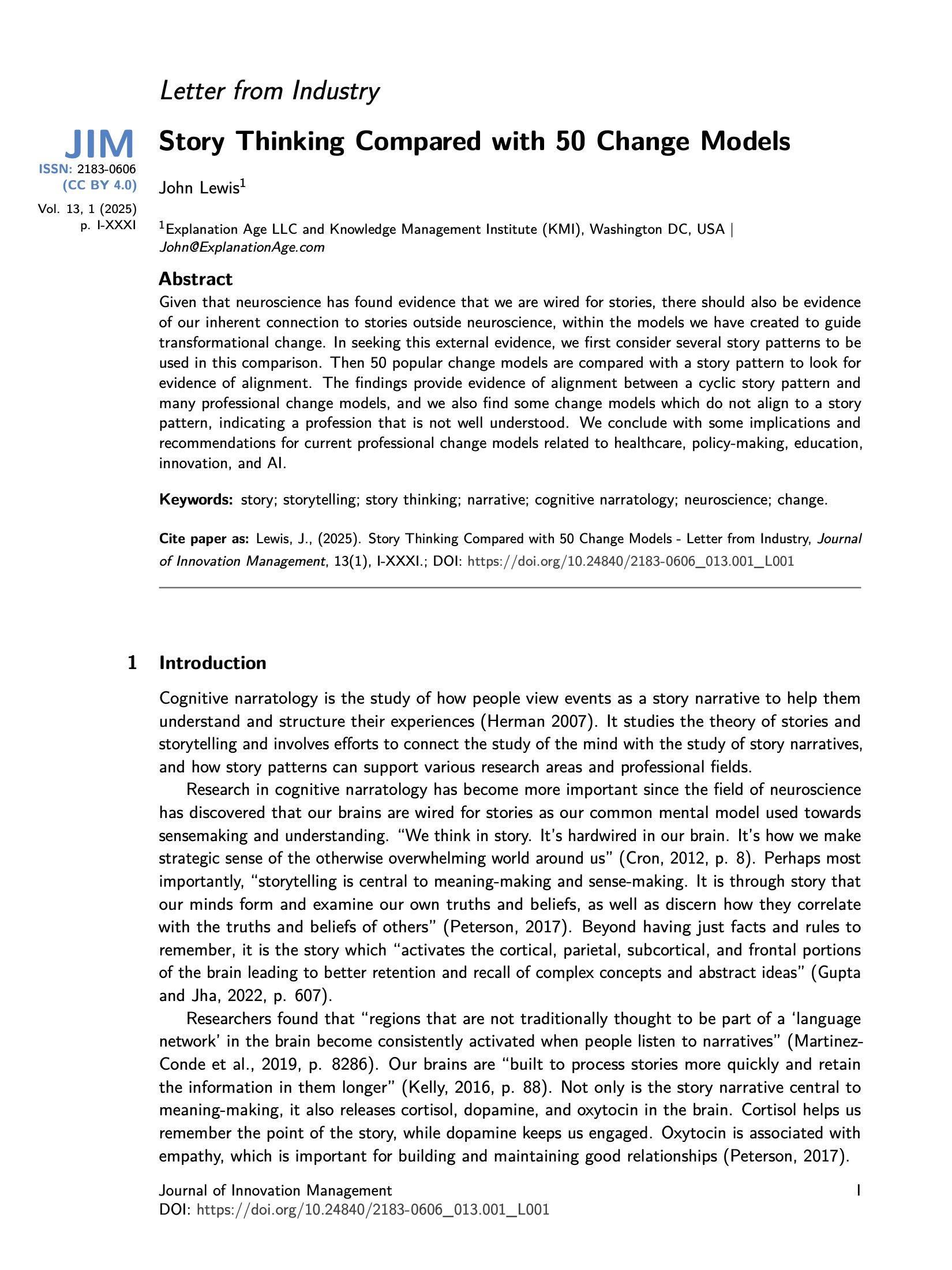Story Thinking Compared with 50 Change Models
Main Article Content
Abstract
Given that neuroscience has found evidence that we are wired for stories, there should also be evidence of our inherent connection to stories outside neuroscience, within the models we have created to guide transformational change. In seeking this external evidence, we first consider several story patterns to be used in this comparison. Then 50 popular change models are compared with a story pattern to look for evidence of alignment. The findings provide evidence of alignment between a cyclic story pattern and many professional change models, and we also find some change models which do not align to a story pattern, indicating a profession that is not well understood. We conclude with some implications and recommendations for current professional change models related to healthcare, policy-making, education, innovation, and AI.
Article Details
Authors who publish with this journal agree to the following terms:
- Authors retain copyright and grant the journal right of first publication with the work simultaneously licensed under a Creative Commons Attribution License that allows others to share the work with an acknowledgement of the work's authorship and initial publication in this journal.
- Authors are able to enter into separate, additional contractual arrangements for the non-exclusive distribution of the journal's published version of the work (e.g., post it to an institutional repository or publish it in a book), with an acknowledgement of its initial publication in this journal.
- Authors are permitted and encouraged to post their work online (e.g., in institutional repositories or on their website) prior to and during the submission process, as it can lead to productive exchanges, as well as earlier and greater citation of published work (See The Effect of Open Access).

